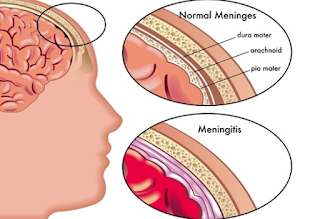Albinism
 Otherwise known as achromia, achromasia, or
achromatosis, albinism is a genetic condition characterized by a deficit in the
production in melanin resulting in the partial or complete absence of pigment
in the skin, hair and eyes. This hereditary disease can be found in humans,
mammals, birds, fish, reptiles and amphibians. Despite the fact that albinism
is a hereditary condition, in most cases, there's no family history of it.
People with albinism often have vision problems and are vulnerable to sunburns
and skin cancers if they do not protect themselves well enough. According to
The National Organization for Albinism and Hypopigmentation, one in every
17,000 people in the United States has some type of albinism.
Otherwise known as achromia, achromasia, or
achromatosis, albinism is a genetic condition characterized by a deficit in the
production in melanin resulting in the partial or complete absence of pigment
in the skin, hair and eyes. This hereditary disease can be found in humans,
mammals, birds, fish, reptiles and amphibians. Despite the fact that albinism
is a hereditary condition, in most cases, there's no family history of it.
People with albinism often have vision problems and are vulnerable to sunburns
and skin cancers if they do not protect themselves well enough. According to
The National Organization for Albinism and Hypopigmentation, one in every
17,000 people in the United States has some type of albinism.
Oculocutaneous albinism is used to refer to
people with little or no pigmentation in their eyes, skin and hair. Little or
no pigmentation in the eyes alone is known as ocular albinism. An individual
with complete absence of melanin is called an albino. One with only a small
amount of melanin is described as albinoid. People with albinism are very pale
with fair hair and very light eyes. In some cases, the eyes appear red or
purple as the iris actually has so little color that blood vessels inside of the eye show through.
Hence why the main test for albinism is an eye test.
 A person with albinism is generally as healthy
as the rest of the population. However, problems with vision and skin are
particularly common. Vision problems result from abnormal development of the
retina and patterns of nerve connections between the eye and the brain. The
lack of pigment in the eyes results in problems with eyesight leading to
discomfort in bright light. Concerning the skin, the lack of melanin, which
helps protect the skin from UV radiation, means that their skin can burn more
easily. Precautions, such as applying lots pf suncream and staying covered,
need to be take to avoid damage to the skin caused by the sun.
A person with albinism is generally as healthy
as the rest of the population. However, problems with vision and skin are
particularly common. Vision problems result from abnormal development of the
retina and patterns of nerve connections between the eye and the brain. The
lack of pigment in the eyes results in problems with eyesight leading to
discomfort in bright light. Concerning the skin, the lack of melanin, which
helps protect the skin from UV radiation, means that their skin can burn more
easily. Precautions, such as applying lots pf suncream and staying covered,
need to be take to avoid damage to the skin caused by the sun.
Albinism is caused when a person inherits one or
more defective genes that cause them to be unable to produce the normal amounts
of a melanin. Melanin is a dark brown to black pigment occurring in the hair,
skin, and iris of the eye in people and animals. It is responsible for the
tanning of skin when exposed to sunlight.
Researchers have identified several genes that
result in albinism. The genes are located on "autosomal" chromosomes
- chromosomes that contain genes for general body characteristics. Genes carry
the information that makes you an individual. Albinism is a "recessive
trait" - a person without albinism can carry the albinism trait. Both
parents must carry a defective gene to have a child with albinism. When neither
parent has albinism but both carry the defective gene, there is a 25% chance
that the baby will be born with albinism.
Individuals with this condition are often
outcasted and misunderstood by society. They can be the center of ridicule,
fear and even violence.
McA




















